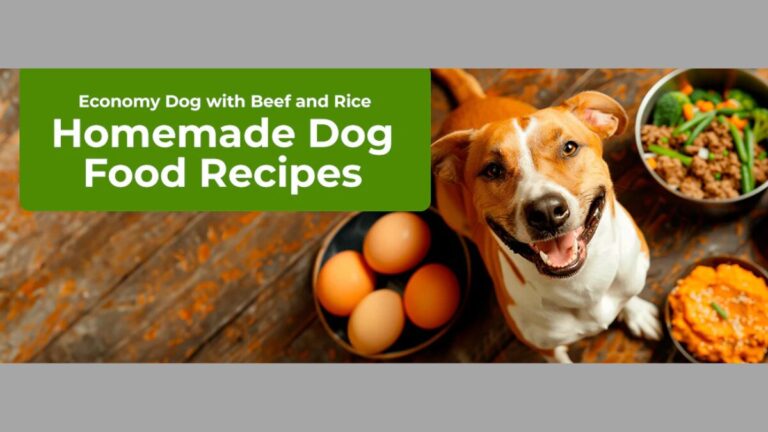Introduction to FreshPet Dog Food
Fresh pet dog food is an innovative and healthier alternative to traditional kibble and canned food. It focuses on providing dogs with balanced meals made from wholesome, minimally processed ingredients. With the growing awareness of pet health, fresh dog food has become increasingly popular among dog owners. This guide explores the benefits, types, and considerations to ensure your furry friend gets the best nutrition possible.
Fresh food for dogs aims to replicate a natural diet, offering high-quality proteins, fresh vegetables, and essential nutrients. Unlike traditional dog food that undergoes heavy processing, fresh options retain their natural flavors and nutrients. If you’re considering making the switch, this guide will help you understand everything you need to know, from benefits to preparation methods.
Why Choose Fresh Dog Food?
Superior Nutrition for Your Dog’s Well-being
Fresh pet dog food provides several nutritional benefits over traditional dog food. Since it includes real, high-quality ingredients like chicken, beef, sweet potatoes, and leafy greens, it delivers a nutrient-rich diet essential for your dog’s overall health.
Kibble often loses nutritional value due to high heat and industrial processing. On the other hand, fresh food retains its vitamins and minerals, thanks to gentler preparation methods. This means your dog receives optimal levels of protein, fiber, and essential fatty acids, improving their coat, digestion, and energy levels.
Switching to fresh dog food can also address food sensitivities. Many dogs experience allergies or digestive issues from artificial fillers and preservatives found in commercial food. Fresh meals eliminate unnecessary additives, making them gentler on sensitive stomachs.
Types of FreshPet Dog Food
Store-Bought vs. Homemade Options
Choosing between store-bought and homemade fresh dog food depends on your budget, time, and convenience. Many companies now offer pre-portioned, ready-to-serve meals made from fresh ingredients. These options are ideal for busy pet owners looking for hassle-free solutions.
Homemade fresh dog food allows you to control the quality and specific ingredients. While it requires effort, it can be tailored to your dog’s unique dietary needs. However, consulting a vet or pet nutritionist is crucial to ensure your homemade meals provide balanced nutrition.
Key Ingredients in Fresh Dog Food
Proteins, Carbohydrates, and Vegetables
The foundation of fresh pet dog food includes a variety of high-quality proteins like chicken, turkey, beef, or fish. Protein is vital for maintaining muscle health and energy levels.
Carbohydrates such as brown rice, sweet potatoes, and oats provide necessary energy while being easy on digestion. Vegetables like carrots, peas, spinach, and pumpkin offer essential vitamins and antioxidants that promote a healthy immune system.
Fresh food also incorporates healthy fats from sources like fish oil or flaxseed to enhance coat health and brain function. Understanding these core ingredients helps you make informed choices about your dog’s diet.
Benefits of Feeding Fresh Dog Food
Improved Digestion and Energy Levels
Fresh dog food can significantly improve your pet’s digestion, reducing issues like bloating, gas, and diarrhea. The absence of artificial fillers allows for easier nutrient absorption.
Moreover, the balanced nutrient profile boosts your dog’s energy levels, making them more active and playful. A fresh diet also supports better oral health, reducing bad breath and tartar buildup.
Many dog owners report visible improvements in their pets’ overall well-being after switching to fresh food. Their coats become shinier, their skin healthier, and their immune systems stronger.
Preparing Fresh Dog Food at Home
Tips for Homemade Recipes
Preparing fresh dog food at home involves choosing fresh, human-grade ingredients. Ensure the meals include 40% protein, 50% vegetables, and 10% grains or other carbohydrates.
For example, a simple recipe might include boiled chicken, steamed sweet potatoes, and chopped spinach. Avoid harmful ingredients like onions, garlic, chocolate, and high-fat meats, as these can be toxic to dogs.
Storing and Serving Fresh Dog Food
Keeping Meals Safe and Fresh
Appropriate capacity is basic while taking care of new food. Dinners ought to be refrigerated and consumed in no less than three days to keep up with their quality. On the other hand, freezing feasts in segments guarantees they stay new longer.
While serving, let frozen dinners defrost normally or warm them somewhat to room temperature. Continuously guarantee your canine approaches clean water to supplement their new eating routine.
Cost Considerations
Is Fresh Food Worth the Investment?
While fresh pet dog food is generally more expensive than traditional kibble, many owners find the investment worthwhile due to its health benefits. Healthy dogs tend to require fewer vet visits, balancing the higher upfront cost.
Final Thoughts on Fresh Dog Food
Fresh pet dog food is a commitment to your dog’s health and happiness. By prioritizing high-quality ingredients and proper preparation, you can ensure your furry friend enjoys a long, healthy life.
FAQ:
Is fresh pet dog food better than kibble?
Yes, fresh pet dog food is often considered better than kibble due to its high-quality, minimally processed ingredients. It retains essential nutrients that promote your dog’s health, such as proteins, vitamins, and healthy fats. Unlike kibble, which often contains fillers and artificial preservatives, fresh food provides a more natural diet, improving digestion, coat quality, and energy levels.
How do I transition my dog to fresh food?
Progressing to new canine food ought to be done slowly to forestall stomach related upset. Begin by blending a little part of new food with your canine’s ongoing eating regimen. North of 7-10 days, increment the proportion of new food while diminishing the old food until the change is finished. Screen your canine for any indications of inconvenience and counsel your veterinarian if necessary.
Can I prepare fresh dog food at home?
Yes, you can prepare fresh dog food at home, but it’s essential to ensure the meals are nutritionally balanced. Use high-quality proteins, fresh vegetables, and healthy carbohydrates, and avoid ingredients toxic to dogs like onions and garlic. Consulting a vet or pet nutritionist will help you create recipes tailored to your dog’s specific dietary needs.




